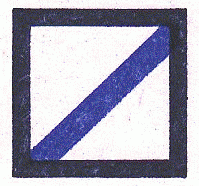R.A.F. Components in Beach Bricks
“It was decided to put a small RAF Component into a ‘Brick’ to look after RAF interests on landing beaches or whatever action the RAF was to take part in concerning Combined Operations.”
Opening entry in the Operations Record Book of the R.A.F. Component of 31 Beach Brick
The Combined Operations Pamphlet No. 2, “Beach Organisation and Maintenance”, issued in September 1942 stated that, “the units normally working in the Beach Maintenance Area are referred to as the Beach ‘brick’”’.
At this time a “Beach Group” was a small unit within the “brick”. A Beach Group consisted of an Army Movement Control Group, Army working parties and a Royal Navy Beach Party – about 120 men in all. Other specialist sections might also be added to the Beach Group.
Beach Groups were provided on a scale of one per battalion front, so three Beach Groups would be included in the Beach Brick for a brigade assault. Various other units and detachments would work alongside the Beach Groups in the Beach Maintenance Area, so that the Beach Brick for a brigade might include around 2,200 men.
Consideration was being given at this time, to the formation of a “Beach Battalion” with a War Establishment that would include many of the units and detachments that currently operated loosely together in a “brick”.
The North African landings in November 1942 fed valuable experience into the development of beach organisation. After this it was decided, amongst other things, that an infantry battalion should be included as the backbone of a Beach Brick and that a more substantial R.A.F. team should be added, where necessary.
The 7th Battalion Royal Marines arrived at Kabrit in Egypt at the beginning of 1943 and was given the job of planning and forming the first of several ‘Beach Bricks’ to be established in the Middle East. The ‘1st Middle East Beach Brick’ formed by 7th Battalion Royal Marines became ’31 Beach Brick’ and they provided instructors to help with the training of the other Beach Bricks.
The core of each Beach Brick was an infantry battalion. Along with the R.N. Beach Party and specialised units from the R.E., R.A.S.C., R.A.O.C, REME, R.A.M.C., plus pioneers, anti-aircraft gunners, signals personnel and an R.A.F. component, this took the total number of men in each Brick towards 3,000.
The R.A.F. Component of a Beach Brick had an establishment of 5 officers and 35 other ranks. This included 2 officers and 17 other ranks for explosives duties who were intended for eventual transfer to the air ammunition parks.
While new Beach Bricks were being set up in the Middle East, new-style beach formations were also being set up elsewhere. These formations forsook the designation ‘Beach Brick’ and instead took on the name ‘Beach Group’ previously applicable to a sub-unit of a ‘Brick’ (as described above).
The R.A.F. Components that were being added to the Beach Bricks were therefore not the only R.A.F. beach units being formed. In fact there were three different types of R.A.F. beach unit in 1943 because R.A.F. beach units were formed on a different basis in the Middle East, North Africa and the United Kingdom.
All three types of R.A.F. beach unit took part in the invasion of Sicily in July 1943 (Operation ”HUSKY”) and in the invasion of the Italian mainland in September (Operations ”BAYTOWN” and “AVALANCHE”). After Operation “AVALANCHE” the R.A.F. Components of Beach Bricks were disbanded due to the formation of new Mediterranean beach units.
The R.A.F. Components in Middle East Beach Bricks were:
- 31 Beach Brick, R.A.F. Component
- 32 Beach Brick, R.A.F. Component
- 33 Beach Brick, R.A.F. Component
- 34 Beach Brick, R.A.F. Component
- 35 Beach Brick, R.A.F. Component
- 36 Beach Brick, R.A.F. Component
